

“Ecological resilience has been defined as the magnitude of disturbance that can be experienced before a system moves into a different state and different set of controls.” (Holling, 1973)
The Limits of Resilience is organized by guest curators Malin Walleser (media artist, carpenter) and Felix Gaulhofer (ecologist). Together with various artists, ecologists, musicians, scientific and non-scientific researchers, they will address the urgent topic of resilience in socio-ecological systems. It is intended to be a place for critical debate and research. The program includes visual art such as site-specific installations, watercolours and sculptures, performances, concerts and sound art, discussion formats, artist talks and workshops.
CURATORIAL APPROACH
In 1973, Canadian ecologist C.S. Holling defined ecological resilience as the magnitude of disturbance that can be experienced before a system moves into a different state and different set of controls. In 2000, the British human geographer Neil Adger described social resilience as the ability of human communities to withstand external shocks to their social infrastructure, such as environmental fluctuations or social, economic and political upheaval. However, resilience is also the ability to live on in the face of change and emphasizes the need to accept change and adaptation as a fundamental property of systems in order to maintain continuity, rather than assuming stability and trying to rationalize deviations from it. How much disruption can a system withstand? How far can a system adapt before it becomes an abolition? How fast can change be so that it is still tolerable? Resilient systems are able to restructure themselves and rely on dynamic learning and development processes. In order to imagine the future and develop new narratives, we need to work together with art and culture. In this way, people can be taken on a journey of transformation.
Marie Vermont: The common landscape of Lindabrunn (picture, audio)
Jakob Schauer: A resilient sound-map (outdoor sound installation)
Heidi Trimmel: Solutions I: communication (interactive intervention)
Hannah Todt: The difference between everything (site-specific installation)
Claudia Rohrauer: Workshop and presentation of plant-based photo developers
Felix Gaulhofer/ Malin Walleser: LB24_context_data (outdoor installation)
Program Saturday:
14:00 Opening
14:30 Photo Workshop with plant-based photo developers (Claudia Rohrauer – limited number of participants, please sign up before August 21st through post@claudiarohrauer.info
15:00 Nature Walk with the Landschaftspflegeverein (Landscape Conversation Assiciation)
15:00 SOUNA heat wave (Sauna-Sound Art Installation: Golden Diskó Ship and Kollektiv RISS) until 20:00
17:00 My Water is Your Water (Workshop in Art & Activism: Mekhala Dave / Jakob Kukala, EN)
19:00 Dinner
20:00 Continuum of Resilience (Djonni Laser live)
21:00 Performance (Heidi Trimmel)
22:00 Echoes of Resilience (Nadeshda)
Program Sunday:
12:30 Tour of the exhibition
14:00 Activism & Resilience (Interactive lecture: Irene Nemeth)
15:00 SOUNA heat wave (Sauna-Sound Art Installation: Theresa Stroetges/ Wiebke Frerichs/ Malin Walleser) until 18:00
15:30 Becoming symbiotic (Performative exploration with multispecies habitat interventions: Isa Klee)
18:00 Open discussion (with Heidi Trimmel/ Mekhala Dave)
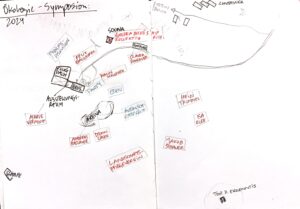
Marie Vermont’s Allmende [Common Land] refers to the common landscape, which can be simultaneously entered and inhabited by various living beings without consumption. Insect larvae next to car tires, knotweed, bones, berries, cans, birds, building rubble and animals, between wind, weather and displacement. Since 2021, the Allmende series with several hundred watercolors in small and large format has been created from stays in these public, undesigned non-places. During the symposium The Limits of Resilience, a series of paintings and an audio cassette from the common landscape of Lindabrunn will be produced based on the series.
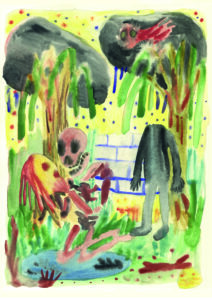
The 7-channel sound installation combines all the ambient sounds of the semi-arid grassland on the former communal land with an electronically generated sound structure. The listening experience extends over large parts of the site, with the fusion of synthetic and “natural” sounds at the center of attention.
Carefully selected sounds test the limits of the differentiability of our perception in the site-specific sound installation.
Heidi Trimmel creates a system-analytical map of the human-environment relationship in which decisive variables are defined and linked. Balancing and reinforcing cycles become visible. This map forms the basis for discussion about where forces should best be focused or released in order to achieve a (re)integration with nature. In Heidi’s opinion, a renegotiation of the social contract that forms the basis of modern society must also include animate and inanimate nature.
The residency at Lindabrunn offers the opportunity to consider resilience as fluctuating, and to understand change not in terms of progress, but to focus on its malleability, which is not necessarily purposeful. Our imagination should be mobilized through non-scientific research and playful experimentation to enable a relationship with our environment that moves beyond the antagonistic relationship between harnessing and canonizing nature. Improvised gestures form a site-specific installation that builds on the existing landscape and refers to the structures and materials found in Lindabrunn.
Workshop and presentation of plant-based photo developers
The workshop offers an insight into alternative and sustainable processes in the analog photo lab. The central feature is the ability of plants to act as developing agents through the phenols and polyphenols they contain and to reduce silver salts to metallic silver. During a walk, plants growing on site will be collected to serve as source material for image production: the phytogram technique will be presented, in which plants develop their own image in the form of a silver image through direct contact with the film material. The photo documentation of the walk will then be developed in a plant-based solution. The joint process with a performative character opens up a field for an exchange about the relationship between environment, material resource and image production as well as the depicted and the depicted.
Previous knowledge of photography is not a prerequisite, but can be an advantage.
Please register in advance by 21.8. at post@claudiarohrauer.info
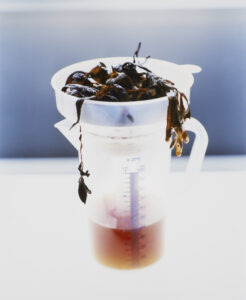
The Symposion in Lindabrunn is the largest contiguous dry grassland area on the southern thermal line with rarities such as fly orchid and yellow flax. The area has been used by artists since 1967, creating a unique symbiosis of nature and art and preserving the dry grasslands, which are also used as a recreational area, to this day.
Website: https://landschaftspflegeverein.at
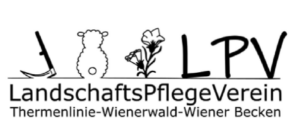
Data collected, saved, postponed. Observed, measured and structured values on a specific issue. Raw data systematized, analysed and interpreted. The context is the purpose. The processing is its meaning. Subjective data processing is distorted. And what does it look like there? Is it the utopia that awaits there, or the gloomy downfall? Have we taken it too far? Opportunity squandered. The frenzy of adaptation and the hysteria of change may heal us or destroy us. Perhaps we will only know when we have gone one step too far.
Artistic processing of data collected according to scientific methodology.
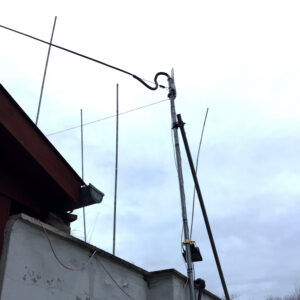
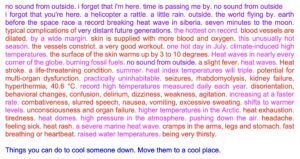
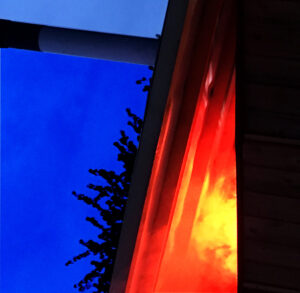
A Workshop in Art and Activism
In combining each of their situated practices, the artist Jakob Kukula and the ocean law & policy researcher Mekhala Dave invite you to a workshop on celebrating water: its symbolic, political and spiritual essence. In a world facing climate change, water is witnessing relentless impacts. Human actions from colonial times and to present day negligence from neoliberal systems have raised pollution, contamination and scarcity of water that is a global crisis to many vulnerable communities that depend on it. With more claims on property and privatization, the access to ample water is increasingly restricted. Our connection with water is also compromised.
In anthropocentric conditions, how can we unlearn our ways and take action? By taking water as inspiration and guidance, we can aim to unlearn in plurality of exchanges on how to flow with water and in the porosity of water, to collectively think of possibilities for resistance for our water bodies ‒ ice, rivers, lakes and ocean from different strategies that arise across rituals, movements, activist and artistic practices. From rooting in localized, place-based struggles to the global commons, we will respond from critical moments and activations surrounded by the artwork Loose Harbour (2017) from the artist Leo Schatzl that touches Symposium Lindabrunn’s history of crossing into watery worlds.
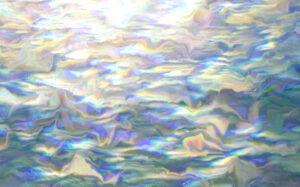
The communication center, which looks like a classic amphitheater made of natural stone, is intended to be the stage and thus the experiential space for the live performance in the open air. Visible but decentralized, the so-called arena will be played with Djonni Laser’s instruments and the corresponding equipment. The focus will be on the idea of a place of gathering and exchange. The listeners sit in a circle on different levels and can experience the intensity and quality of the sounds from each position through specially aligned loudspeakers. Neoclassical, partly polyrhythmic piano playing based on “continuous music” is accompanied by spherical, noise sounds and the voice sometimes serves as noise, sometimes as an instrument. The focus is on the sound experience. Resilience should be experienced as an empowering state in the group process. An emotional and real borderline experience and border crossing is approached in a musical way in order to generate the moment of a shared, profound process.
Live performance
A cassette loop performance deals with the exploration of the resilience of cassette tapes. It attempts to break the boundaries of the medium (on a mechanical and musical level). I am trying to reach a point where the emotional and beautiful endurance of the music and recordings evolves into a fractured and harsh sound. A performance that creates a sense of tension in which the hypnotic and continuous sound of repetition, despite the breaking of the recordings and a fit of discomfort, retains its beauty.
…using the example of a local initiative against a road project, the Wiener Neustadt eastern bypass
The lecture moves from the definition of the term and general considerations on activism and resilience to a specific project where people have become active. After a brief review of the history of the controversial road project and the legal steps, we will look at the initiatives that have been formed, the activities that have been undertaken and the creative inputs that have emerged. We look at how cooperation between a citizens’ movement and activists can work,
what synergies there are and where sticking points or conflicts can arise, we report on strategies and speculate whether or where the term “resilience” can be applied at all, and by dealing with this project, hidden talents came to light among the protagonists. Whether this
creativity already touches on the field of art remains to be seen.
Performative exploration with multispecies habitat interventions
The performative walk focuses on species living on site, such as the toadflax bee, which nests on the dry grassland in early summer. The aim is to become symbiotic with the landscape and its more-than-human inhabitants; as part of the performative exploration, Klee encourages visitors to experience their own role in the ecosystem anew through habitat interventions for other species. Yellow cloths and building materials – as used for constructive activities in urban development – as well as found, renewable raw materials on site will be used. Human interventions in the landscape will be thematised and reflected upon, and new approaches to sculpture and landscape will be explored. (Please bring yellow scarves and cloths made from natural materials).
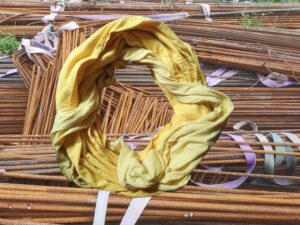
References:
Adger, W.N. (2000): Social and ecological resilience: are they related? Progress in Human Geography 24: 347–64.
Folke, C., Colding, J. And Berkes, F. (2009): Synthesis: building resilience and adaptive capacity in social-ecological systems. Chapter 14 in Navigating Social-Ecological Systems Building Resilience for Complexity and Change, pp. 352-387. Cambridge University Press.
DOI: https://doi.org/10.1017/CBO9780511541957.020
Holling, C.S. (1973): Resilience and stability of ecological systems. Annual Review in
Ecology and Systematics 4: 1–23.